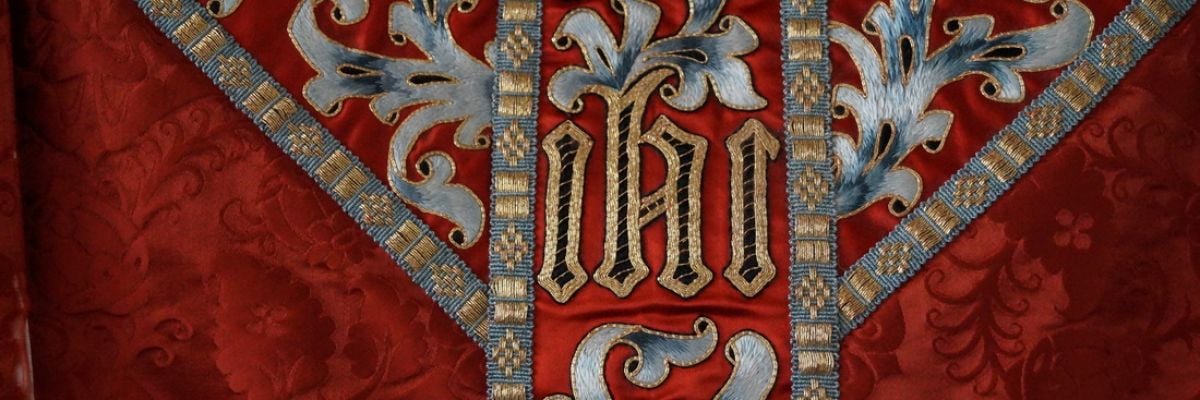
The men who have worn the shoes of the fisherman have overwhelmingly been holy individuals dedicated to leading the Church through the turmoil of human history. Of course, there have been some who led less than holy lives and used the papacy for political and economic gain, but for those “bad” popes there are many more others who lived authentically their calling as universal shepherd and vicar of Christ.
Most of the popes who reigned from the first century through the fourth gave their lives in martyrdom during the persecutions of the Roman Empire. But once the co-emperors Licinius and Constantine legalized the Catholic faith with the Edict of Milan in 313, papal martyrdom became exceedingly rare; indeed, only two popes were martyred subsequently. And many popes dealt with theological controversies and heresies during their reign, but only one, Pope St. Martin I (r. 649–653), whose feast day we celebrate today, died a martyr having refused to acquiesce to a heretical teaching.
The early Church, especially after legalization, dealt with various Christological heresies as it struggled to develop the precise theological terminology to define the apostolic teaching concerning the Trinity and the relationship of the Persons therein. Ecumenical councils were held to refute heretical teaching and develop the language used to answer the question, “Who is Jesus?”
Heresy can be extremely difficult to eradicate. The Church can definitively condemn a heresy only to see it morph into a similar erroneous teaching later. Heretics, or their followers, though rebuffed by the Church, sometimes develop similar, yet not the same, teachings in an effort to skirt the line of orthodoxy.
This game was played in the first several centuries of the Church over the nature of Christ. Arius in the fourth century taught that Jesus was a creature of God and not consubstantial with the Father. Nestorius in the fifth century believed Mary did not give birth to the God-man but only the “fleshy garment” of Christ. Eutyches opined in his teaching, known as Monophysitism, that Jesus had only one (divine) nature. Although the Church condemned these heresies in councils at Nicaea (325), Ephesus (431), and Chalcedon (451), various theologians continued to develop new ways to question orthodox teaching.
In the seventh century, a new heresy erupted in the Eastern half of the Church that sought to tackle the issue of Jesus’ humanity and divinity from a new angle. Monophysitism had been condemned at Chalcedon, but many still held to it. In an effort to reconcile the Monophysites, Sergius (r. 610–638), patriarch of Constantinople, proposed a new teaching known as Monothelitism—or the belief that Jesus had only one divine will. But the problem was the same as with Monophysitism: it denied the true humanity of Jesus. If the Lord only had one divine will, then how can the Church teach that Jesus was true God and true man?
Many Eastern bishops and theologians embraced Sergius’s teaching, but others rejected it, and some fiercely, such as St. Maximus the Confessor (580–662), who suffered physical violence (his tongue and right hand were cut off) and exile for refusing to embrace Monothelitism. Sergius tried to win papal approval of his new teaching by sending a letter to Pope Honorius (r. 625–638), who gave an ambiguous reply that led to fifty years of conflict. Emperor Heraclius (r. 610–641) agreed with Sergius and, in an exercise of caesaropapism, proclaimed Monothelitism official doctrine.
The controversy was still raging when Martin was elected pope in 649. A brilliant scholar and former papal envoy to Constantinople, Martin recognized the error of Monothelitism and worked diligently against the heresy throughout his pontificate. His fight ended with the shedding of his blood.
In October 649, Martin gathered 105 bishops at the Lateran Palace to discuss Monothelitism. The heresy was condemned, and Martin took the bold step of excommunicating the sitting patriarch of Constantinople, Paul II, a purveyor of the erroneous teaching. Emperor Constans II (r. 641–668) was not pleased with Martin’s pronouncement and began a campaign to get rid of the meddlesome pope.
The Byzantine governor Olympius devised a nefarious plan to murder Martin. Olympius’s sword-bearer was to go to Mass and get in line to receive the Eucharist from Martin and then strike him dead. However, the plan failed when, at the moment of reception, the sword-bearer miraculously was unable to see the pope! A few years later, another governor dispatched a large body of troops to Rome where they arrested Martin, placed him on a ship, and sent him to the island of Naxos in the Aegean, where he remained for a year.
After a year without any communication from the pope, the clergy of Rome assumed Martin had died and elected Eugenius I as his successor. News of this election reached Martin after another year had passed. The Church was in a unique situation, with two men acting as pope and neither an antipope. Martin was still pope, since he had not died or resigned, and in reality Eugenius was not pope but rather the ecclesial administrator of Rome (he would become pope when Martin died).
In September 654, Martin was finally escorted to Constantinople, where he spent three months in jail. Eventually he was placed on trial before the imperial treasurer. Martin was accused of plotting rebellion, entering into treasonable communication with Muslims, and refusing to acknowledge Mary as Theotokos (God-bearer), but the real reason for his arrest was his opposition to Monothelitism. Several witnesses were called who gave contradictory testimony, and in an effort to save them from perjury and mortal sin, Martin asked the judge not to have them take the oath. The pope knew the end result of the trial and urged the judge to “finish quickly what you intend with me. Any kind of death will be a benefit to me.”
Martin was found guilty and sentenced to death. The pope was taken to the public square where he was stripped naked, beaten, weighed down with heavy chains, and dragged to prison. Patriarch Paul, near death, pleaded with Constans II to spare the pope’s life. The emperor agreed to commute the death sentence and instead ordered Martin into exile at Cherson in the Crimea. Before his departure, the pope was given one last chance to embrace the Monothelite heresy; he refused. In the spring of 655, Martin was placed on a ship for the Crimea. He spent several months in exile before finally succumbing to his horrible treatment by the Byzantines. The saintly Martin, defender of orthodoxy, was the last martyred pope.



